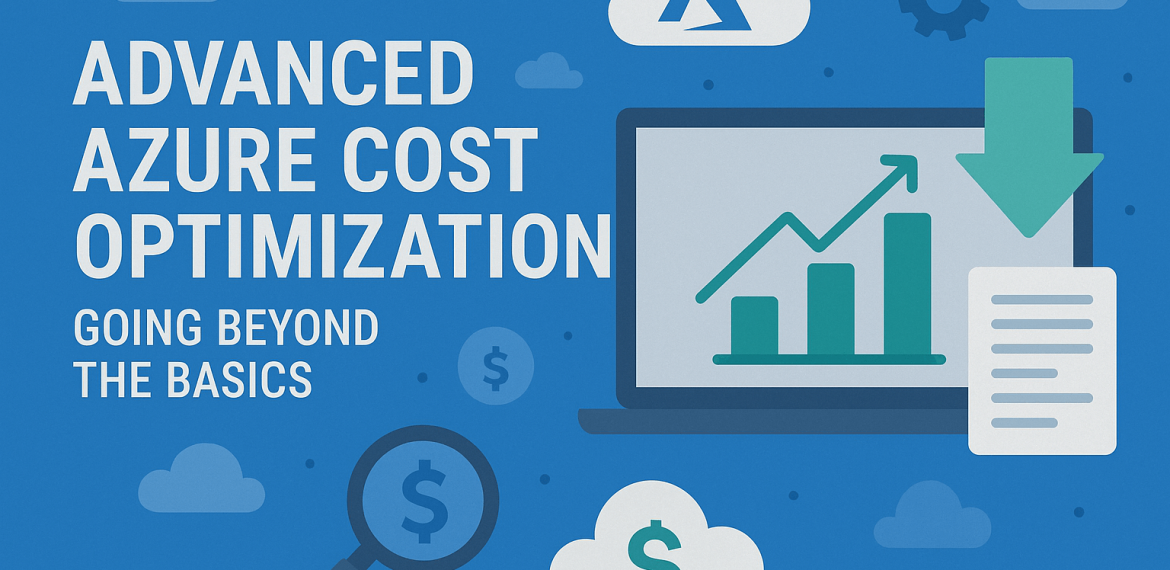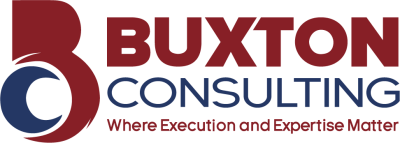
Advanced Azure Cost Optimization: Going Beyond the Basics
Advanced Azure Cost Optimization: Going Beyond the Basics
organizations increasingly recognize that basic cost-cutting measures– such as shutting down unused VMs or applying reservations- can only go so far. Truly sustainable Azure cost optimization demands a deeper, more strategic approach. This blog explores advanced techniques that go well beyond Microsoft’s standard recommendations, helping enterprises unlock substantial savings, improve resource efficiency, and embed cost consciousness into their cloud DNA.
Why Move Beyond Basic Azure Cost Optimization?
Most Azure users start by following Microsoft’s built-in cost-saving recommendations, such as those from Azure Advisor. While these provide tangible value, they are inherently reactive and generic. In 2025, Azure’s evolving ecosystem- with new pricing models, AI-powered tools, and sustainability features- offers far more sophisticated ways to optimize spend. Organizations leveraging these advanced strategies routinely achieve 25–50% cost reductions compared to those relying only on basic best practices.
The shift from basic to advanced Azure cost optimization is about embedding cost intelligence into every stage of cloud operations- from architecture and deployment to ongoing management and business reporting. It’s not just about “saving on the cloud bill” but about making Azure a driver of business agility and innovation, while avoiding wasteful spending.
Advanced Rightsizing: Precision Beyond CPU and Memory
Basic rightsizing typically involves reviewing VM utilization metrics and downsizing over-provisioned instances. Advanced rightsizing is a continuous, data-driven process that uses predictive analytics, historical workload patterns, and business context to optimize resource allocation.
Predictive Analytics: Use Azure Monitor and Application Insights to build custom dashboards that correlate resource utilization with business cycles, not just technical metrics. For example, a retail business can scale up before a major sale event, not just when CPU hits 80%.
Burstable Instances: Azure’s B-series VMs offer a cost-effective solution for workloads with variable CPU needs. Using these for appropriate workloads can yield substantial savings compared to standard VMs.
Container Optimization: For Kubernetes (AKS) environments, analyze node pool utilization and mix spot, reserved, and standard VMs to balance cost, reliability, and performance.
Storage Lifecycle Management: Go beyond simple tiering by implementing automated, policy-based data lifecycle management. For instance, automatically move blobs to cool or archive tiers based on access patterns, then delete them after a defined retention period.
Strategic Commitment Management: Reservations, Savings Plans, and Hybrid Benefit
Azure Reservations and Savings Plans are well-known, but most organizations underutilize their potential. Advanced strategies treat these as a dynamic portfolio, not a set-and-forget purchase.
Portfolio Approach: Assess your entire compute footprint- including Kubernetes, serverless, and VMs- before making commitment purchases. Forecast migrations (e.g., from VMs to containers) to avoid overcommitting on shrinking workloads.
Flexible Commitments: Use shorter-term reservations for uncertain workloads and longer-term ones for stable, business-critical systems. As of 2025, Azure offers 1-month and 1-year commitments for select services, providing greater flexibility.
Hybrid Benefit: If you have eligible Windows Server or SQL Server licenses, Azure Hybrid Benefit can reduce VM costs by up to 40% and SQL Database costs by up to 55%. Integrate this into your broader licensing strategy for maximum effect.
Spot Instances for Non-Critical Workloads: Spot VMs can deliver up to 90% savings, but require careful orchestration. Use advanced automation to gracefully handle interruptions, making Spot viable even for some production workloads.
Advanced Automation and Lifecycle Management
Basic automation might shut down dev environments at night. Advanced automation embeds cost optimization into the CI/CD pipeline, resource provisioning, and even incident response.
Infrastructure as Code (IaC): Use Terraform, ARM, or Bicep to enforce cost-optimized architectures by default. For example, templates can ensure new VMs are rightsized, tagged, and have auto-shutdown schedules.
Event-Driven Scaling: Autoscale not just on CPU or memory, but on business metrics like transaction volume or user concurrency. This ensures resources scale in sync with real demand, not just technical thresholds.
Automated Cleanup: Implement workflows that detect and deprovision orphaned resources- unused disks, abandoned storage accounts, idle VNets- automatically, reducing waste without manual intervention.
Cost Anomaly Detection: Use Azure Monitor alerts and Logic Apps to detect unusual spending patterns in real time and trigger remediation workflows.
Network Cost Optimization: The Silent Budget Killer
Network costs- especially egress charges- are often overlooked but can balloon quickly, especially for globally distributed applications.
Content Delivery Optimization: Use Azure Front Door or CDN to cache and serve content closer to users, reducing egress fees and improving performance.
Edge Compute: For IoT or global applications, process data at the edge to minimize data transfer back to central regions.
ExpressRoute vs. VPN: For hybrid scenarios, evaluate whether ExpressRoute’s predictable pricing is more cost-effective than VPN’s pay-as-you-go model, especially as traffic volumes grow.
Traffic Analysis: Monitor and analyze data flows to identify and eliminate unnecessary cross-region transfers.
Tagging, Chargeback, and FinOps: Culture as a Cost Lever
Resource tagging is a basic best practice, but advanced organizations use tags for granular chargeback, showback, and business reporting.
Tag Inheritance: Leverage Azure’s enhanced tagging features to propagate cost allocation tags automatically across resources, improving accuracy and reducing manual effort.
Chargeback/Showback: Implement models that assign cloud costs to business units, projects, or products, driving accountability and visibility.
Unit Economics: Track cost per customer, transaction, or revenue dollar to align cloud spend with business outcomes.
FinOps Teams: Establish cross-functional FinOps teams that bring together finance, engineering, and operations to make cost a first-class metric in architectural decisions.
Sustainability and Carbon-Aware Optimization
Sustainability is now a core pillar of cost optimization. Azure’s Carbon Optimization tool provides emissions data at the resource level, enabling teams to reduce both costs and environmental impact.
Carbon-Aware Scheduling: Shift batch jobs and non-critical workloads to regions and times with cleaner energy sources, often coinciding with lower demand and pricing.
Serverless and Ephemeral Resources: Use Azure Functions, Logic Apps, and ephemeral disks for transient workloads to minimize both cost and carbon footprint.
Efficient Data Practices: Compress data, implement intelligent tiering, and delete unused backups to reduce storage costs and emissions.
Overcoming the Limits of Native Tools
Azure Cost Management, Advisor, and Monitor are powerful, but have notable limitations for complex, large-scale, or multi-cloud environments.
Customization Constraints: Native dashboards and reports may not meet the needs of large enterprises or those with complex cost allocation requirements.
Real-Time Reporting Delays: Cost data can lag, making it hard to respond quickly to anomalies.
Integration Gaps: Consolidating costs across multiple subscriptions, tenants, or clouds often requires manual effort or third-party tools.
Dedicated cost optimization platforms (like Finout, CloudHealth, or CloudCheckr) can fill these gaps, offering real-time anomaly detection, advanced tagging, cross-cloud visibility, and custom reporting.
Continuous Improvement: The Optimization Flywheel
Advanced Azure cost optimization is not a one-time project but an ongoing discipline.
Regular Cost Reviews: Conduct monthly or quarterly deep dives into cost trends, anomalies, and optimization opportunities.
Post-Incident Cost Analysis: After major incidents or launches, analyze the cost impact and identify lessons for future optimization.
Benchmarking: Compare your Azure spend and efficiency against industry benchmarks or peer organizations to identify improvement areas.
Stay Current: Azure’s services, pricing, and optimization features evolve constantly. Regularly review new capabilities and adjust your strategies accordingly.
How Buxton Can Help
Buxton specializes in helping enterprises move beyond basic Azure cost optimization to achieve sustainable, business-aligned cloud efficiency.
Strategic Assessment: We conduct comprehensive reviews of your Azure environment, identifying waste, optimization opportunities, and roadmap alignment with your business goals.
Architecture Modernization: Our experts guide migrations to serverless, containerized, and hybrid architectures that reduce costs while improving agility.
Advanced Automation: We design and implement custom automation for rightsizing, lifecycle management, anomaly detection, and remediation- embedding cost optimization into your daily operations.
FinOps Enablement: Buxton helps establish FinOps practices, including tagging strategies, chargeback models, and cross-functional collaboration, to make cost a shared responsibility.
Ongoing Optimization: Our managed services provide continuous cost monitoring, regular optimization reviews, and proactive adjustments as your business and Azure evolve.
Sustainability Integration: We help you leverage Azure’s carbon tools and best practices to achieve both financial and environmental goals.
Clients working with Buxton typically achieve 30–50% cost reductions while improving performance, compliance, and innovation velocity. Our approach ensures that Azure cost optimization is not just a tactical exercise, but a strategic advantage.
Conclusion
In 2025, Azure cost optimization is a multi-dimensional discipline- combining technical, architectural, cultural, and sustainability best practices. Organizations that go beyond the basics, embracing advanced rightsizing, strategic commitments, deep automation, FinOps, and carbon-aware strategies, unlock the full value of their Azure investments.
Buxton stands ready to partner with you on this journey, bringing expertise, innovation, and a proven track record to help you achieve sustainable cloud efficiency and business agility. The cloud bill is not just an expense- it’s an opportunity. Let’s optimize it together.

